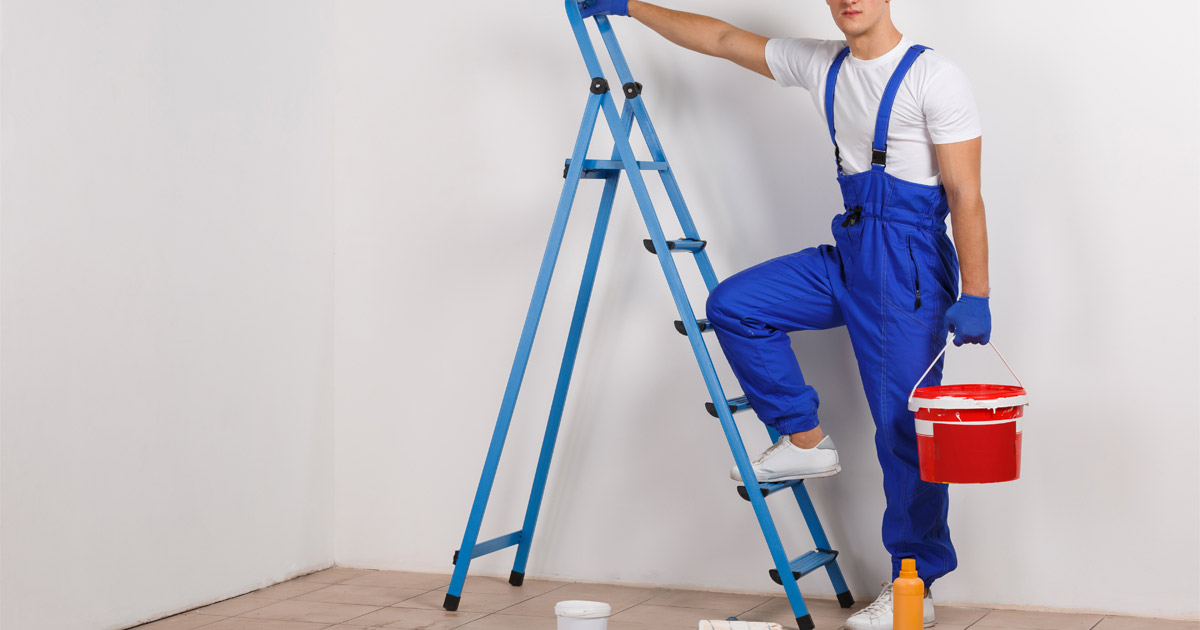Ladders are common in many workplaces, such as warehouse stores and construction sites. However, they pose safety hazards and can lead to serious injuries, such as traumatic brain injuries. The Centers for Disease Control and Prevention (CDC) claims that ladders are involved in approximately 20 percent of all workplace injuries. If a worker becomes injured while using a ladder at work, Workers’ Compensation may be available. The Occupational Safety and Health Administration (OSHA) takes the topic of ladder safety quite seriously, and their guidelines serve as industry safety standards. Those who follow them can increase their safety while using ladders.
Avoid Human Error
Some of the main causes of ladder falls are due to human error, such as not paying attention, wearing slippery shoes, and trying to rush through a job. Not every employee can use a ladder, and they should never be forced. Some workers are not comfortable, while others do not have the strength to climb or move them. Other workers may not be following proper safety procedures and end up with severe workplace injuries. Risky behaviors, such as using the top of a ladder like a step or jumping off a ladder, must be avoided.
Carrying things while climbing up or down a ladder is also hazardous; wearing a toolbelt or having an assistant on the ground to help is safer. Different types of ladders are used for various jobs, and employees should be trained to choose the appropriate ones for the tasks at hand. Employees should also wear clean, slip-resistant shoes with proper soles. If the employee feels dizzy or tired, they should not use the ladder. Regulations specify that only one person should be on the ladder at a time, unless it is a specially designed to accommodate more.
Proper Use
Ladders have maximum weight capacity limits, and this should be clearly shown on every ladder used. This can be exceeded if an employee’s weight is higher or if the employee is carrying something while ascending or descending. The ladder chosen must also be the correct one for the type of job, and it should be inspected before use to ensure that it is in safe, working condition and not in need of repairs.
It is essential to only place ladders on stable, flat surfaces; they should not be shifted or moved when in use. In some cases, it is possible to secure them when a surface is not flat or stable. Any ladder that is damaged or defective should be retired or recycled. Ladders should never be put in front of closed doors unless the door is locked, guarded, or blocked. Furthermore, they should never be used outside during a storm or in high winds.
Three Points-of-Contact
The American Ladder Institute advocates the Three Points-of-Contact method, which specifies that climbers should always face their ladders, and have two feet and one hand or two hands and one foot on the ladder. The American Ladder Institute also stresses that climbers must not be carrying anything in either hand as this can interfere with the grip and increase the risk of falling.
Wilmington Workers’ Compensation Lawyers at McCann Dillon Jaffe & Lamb, LLC Help Injured Workers Receive the Compensation They Deserve
Any type of workplace accident can lead to serious injuries. If you have been injured at work, contact one of our trusted Wilmington Workers’ Compensation lawyers at McCann Dillon Jaffe & Lamb, LLC for help with your claim. Call us at 302-888-1221 or complete our online form to schedule a free consultation. Located in Wilmington, Delaware, we serve clients throughout the state, including Dover, Newark, and Middleton.


